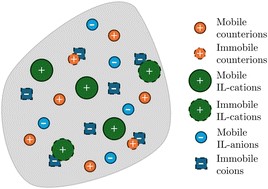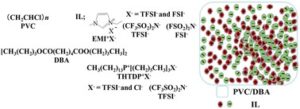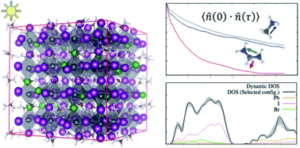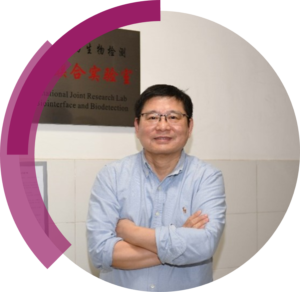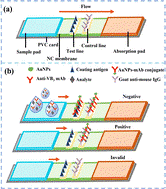Congratulations to Dr Raphaële Clément, University of California, Santa Barbara, United States for being selected as the recipient of the 2024 Journal of Materials Chemistry Lectureship
The Journal of Materials Chemistry Lectureship is an annual award, established in 2010, which honours early-career scientists who have made a significant contribution to the fields of materials chemistry. This year we received numerous high-quality nominations from across the world. With help from our Advisory and Editorial Boards, each nomination was assessed and considered for the award. The final selection was made by our Editors-in-Chief and Executive Editor.
 |
“This is a wonderful recognition of the group’s hard work over the years.”
Dr Raphaële Clément University of California, Santa Barbara, United States 2024 Journal of Materials Chemistry Lectureship |
Dr Raphaële Clément is an Associate Professor in the Materials Department at UC Santa Barbara. She received her Ph.D. in Chemistry in 2016 from the University of Cambridge, working under the supervision of Prof. Dame Clare Grey. She then joined the group of Prof. Gerbrand Ceder as a postdoc at UC Berkeley. Since 2018, the Clément group at UC Santa Barbara is interested in establishing materials design rules, and in optimizing materials processing approaches to advance electrochemical energy storage. The group’s expertise lies in the development and deployment of magnetic resonance and magnetometry techniques (experimental and computational) for the study of battery materials and beyond, with an emphasis on real-time, operando analysis. Raphaële’s recent awards include an NSF CAREER Award, a 2024 Camille Dreyfus Teacher-Scholar Award, the IBA Early Career Researcher Award from the International Battery Association, as well as the Battery Division Early Career Award from the Electrochemical Society. She is a Topical Editor for ACS Energy Letters.
You can keep up to date with Raphaële’s research on her website: https://clement.materials.ucsb.edu/
Discover Raphaële’s RSC publications in this web collection to find out more about her research
Check out our interview with Raphaële below:
How did you feel when you were announced as the winner of the 2024 Journal of Materials Chemistry Lectureship?
I was thrilled. This is a wonderful recognition of the group’s hard work over the years. I have been fortunate to work with talented students and postdocs, so this award goes to them too.
Which of your JMC publications are you most proud of and why?
This paper (J. Mater. Chem. A, 2022, 10, 21565-21578) lead by a former student, Elias, is a textbook example of the impact of materials synthesis and processing on structure and properties. This is a study of a new class of Na-ion solid conductors, where solid-state NMR was key to understanding their complex defect and polymorphic landscape, and ion transport processes. I am proud of it because this was a complicated puzzle and we solved it!
At which upcoming conferences may our community meet you?
I am often at the MRS, ECS, and ACS conferences, as well as more specialized battery and NMR conferences.
What do you like to do in your free time?
I like to spend time in nature (hiking, backpacking, or on a road trip), exercising (yoga, running), exploring new parts of the world, listening to podcasts, going to concerts, and cooking.
Do you have any advice for Early-Career researchers who wish to be nominated for the 2025 JMC Lectureship award?
Don’t give up! There are many talented Early Career researchers out there, and only one receives the Lectureship every year. I applied several times and this paid off.
Please join us in congratulating Raphaële!
Related posts:
2024 Journal of Materials Chemistry Lectureship runners-up: Maxx Arguilla and Phillip Milner
2024 Journal of Materials Chemistry Lectureship shortlisted candidates













